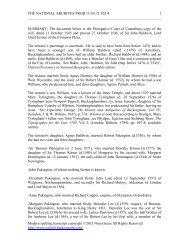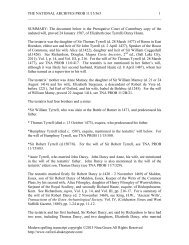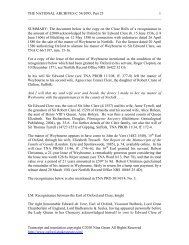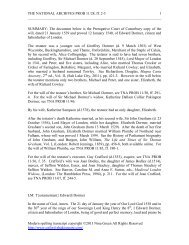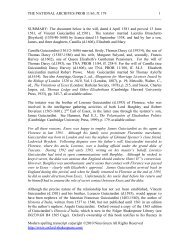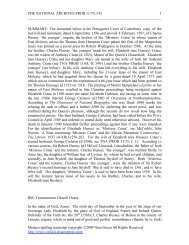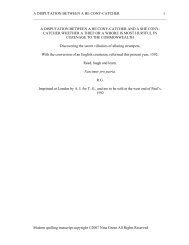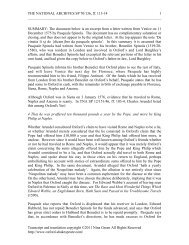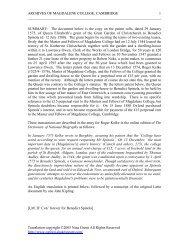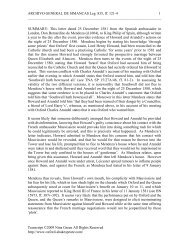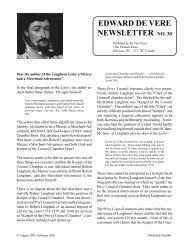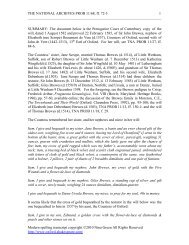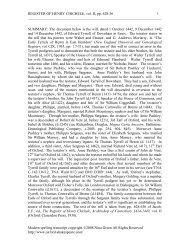Kathman refutation - The Oxford Authorship Site
Kathman refutation - The Oxford Authorship Site
Kathman refutation - The Oxford Authorship Site
Create successful ePaper yourself
Turn your PDF publications into a flip-book with our unique Google optimized e-Paper software.
FALSE PARALLELS IN DAVID KATHMAN’S ‘DATING THE TEMPEST’ 10<br />
________________________________________________________________________<br />
<strong>The</strong> Tempest. What could I say about it? Oh, I have it! I'll say: 'This ship is as leaky as<br />
an unstanched wench'. Could anything be more nonsensical than to claim that the one<br />
was the inspiration for the other? One might as well claim that a tornado was the<br />
inspiration for the line: 'A light breeze played through the leaves of the trees'.<br />
David <strong>Kathman</strong>’s false parallel can thus be analyzed as follows:<br />
A huge leak in the ship lets in water five feet deep which requires constant bailing<br />
by passengers and crew for three days and four nights.<br />
Not true for <strong>The</strong> Tempest.<br />
True for the Strachey letter.<br />
Ergo: a false parallel.<br />
&&&&&&&&&&&&&&<br />
(5) David <strong>Kathman</strong> writes:<br />
Strachey tells how "we . . . had now purposed to have cut down the Maine Mast" (12);<br />
the boatswain in the play cries, "Down with the topmast!" (1.1.34).<br />
David <strong>Kathman</strong>’s comparison is egregiously misleading. Here is a fuller quotation from<br />
Strachey:<br />
But it did not light us any whit the more to our known way, who ran now (as do<br />
hoodwinked men) at all adventures, sometimes north and northeast, then north and by<br />
west, and in an instant again varying two or three points, and sometimes half the<br />
compass. East and by south we steered away as much as we could to bear upright, which<br />
was no small carefulness nor pain to do, albeit we much unrigged our ship, threw<br />
overboard much luggage, many a trunk and chest (in which I suffered no mean loss), and<br />
staved many a butt of beer, hogsheads of oil, cider, wine, and vinegar, and heaved away<br />
all our ordnance on the starboard side, and had now purposed to have cut down the main<br />
mast the more to lighten her. (Wright, pp. 13-4)<br />
Although Strachey mentions a plan to cut down the main mast to lighten the ship which<br />
was not carried out, there is no mention whatever in <strong>The</strong> Tempest of cutting down the<br />
mainmast, nor, in fact, any mention of the main mast at all. <strong>The</strong> nautical manoeuvre<br />
discussed in <strong>The</strong> Tempest ('Down with the topmast!') is the lowering of the topmast so<br />
that the ship, which is under sail, can round a point of land. David <strong>Kathman</strong>’s alleged<br />
parallel is thus both misleading and false.<br />
<strong>The</strong> <strong>Oxford</strong> English Dictionary defines the two masts as follows, giving quotations from<br />
Shakespeare for both:<br />
© 2005 Nina Green All Rights Reserved<br />
http://www.oxford-shakespeare.com/



